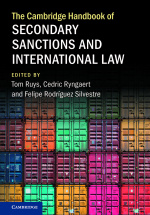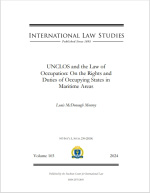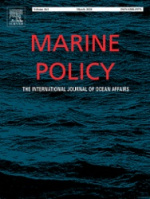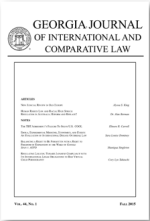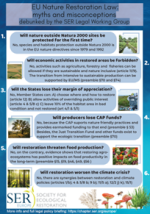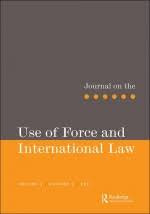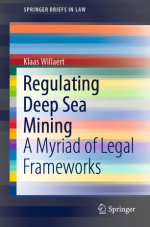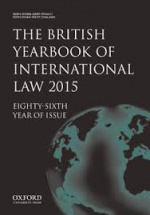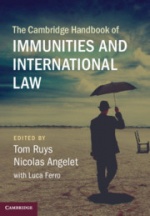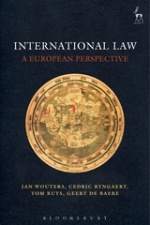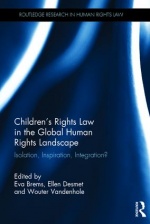We live in an age of sanctions. For geopolitical reasons, powerful states and economic blocs increasingly impose unilateral measures restricting economic and financial transactions and dealing with certain target states. These sanctions may apply to transactions between the sanctions sender and a target but may at times also extend to transactions between third states and the target. By imposing such ‘secondary’ sanctions, sending states aim to further isolate the target. The extraterritorial character of secondary sanctions makes them controversial, as they impinge on third states’ economic sovereignty and the latter’s operators’ freedom to conduct international business. This book addresses the legality of secondary sanctions from multiple legal perspectives, such as general international law, international economic law, and private law. It examines how third states and operators can legally react against secondary sanctions, for example, via blocking legislation or litigation. It also provides economic and political perspectives on secondary sanctions.
Published in: (2024) 103 International Law Studies, 230-269.
As of today, the framework of ocean governance of coastal maritime areas created by the United Nations Convention on the Law of the Sea (UNCLOS) is well understood and accepted by the international community. However, there are large and important areas of ocean space around the world that are subject to a more nuanced framework of interrelated norms. These are maritime areas that have come under the effective control of occupying States, often through the use of force. As such, the legal framework applicable to these maritime areas is that of the law of occupation. Nevertheless, because of the specificities of the zonal maritime regimes established under UNCLOS, the application of the law of occupation is seldom as straightforward at sea as it is on land. The objective of this article is therefore to shed some light on the application of the law of occupation at sea, and in doing so arrive at a comprehensive analysis of the rights and duties of occupying States in maritime areas.
Published in: (2024) 163 Marine Policy.
With the oceans covering 70% of the world’s surface, one might be under the illusion that every State might find sufficient space for their activities, nothing could be further from the truth. This was proven once more in January 2022 and August 2023 when Russian vessels sought to engage in military exercises within strategic areas of the Irish and Norwegian exclusive economic zones (EEZs), choosing some of the local fishermen’s preferred locations in the process. Unlike their governments, the local fishermen refused to accept the Russian intrusions and via continuous protest through presence succeeded in forcing the Russian Navy to move the exercises to another area. This example is proof that to this day, the legal framework of the EEZ still gives rise to significant questions and uncertainties, often to the benefit of lawfare lawyers, especially in regards to foreign military activities and overlapping uses of the same area. Art. 56 LOSC awards sovereign resource rights to the coastal State, but arts. 58 and 87 LOSC grant the maritime user State the freedom to navigate. How to reconcile these different uses has for a long time occupied the minds of law of the sea lawyers. In this article, an attempt is made - utilizing a selection of national and international jurisprudence - to clarify the relation between these different uses of the EEZ, their permissibility and why the fishermen’s success in these cases might not so easily be translated into general international law.
(2023) 51 3 Ga. J. Int'l & Compar. L.
The FSR and the FDI screening mechanism are just two examples of a much broader set of new tools intended to strengthen the EU’s hand in the evolving geo-economic confrontation. The purpose of this Article, however, is not to exhaustively map all relevant EU instruments. Rather, it focusses specifically on three tools that raise pressing questions from an international law perspective, critically examining how they fit within the international legal framework, and what they reveal about the EU’s place therein. These tools are the revised Trade Enforcement Regulation, the revised EU Blocking Statute, and the new “Anti-Coercion Instrument” (ACI).
EU Nature Restoration Law: myths and misconceptions debunked by the SERE Legal Working Group, May 2023
There are a lot of misconceptions on the EU nature restoration law proposal. Several of these misconceptions have been debunked by the Legal Working Group on restoration. For a legal analysis, see SERE Legal Working group, The EU Nature Restoration Law: Providing legal certainty in tackling the biodiversity and climate crisis, May 2023, available at https://serchapter2018.wpenginepowered.com/europe/files/2023/05/EU-Natur...
For a broader legal assessment of the law, see SERE Legal Working Group, Legal assessment of the Proposal for an EU Nature Restoration Law, April 2023, available at: https://chapter.ser.org/europe/files-2023-04-sere-legal-working-group-as...
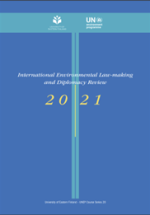
International Environmental Law-making and Diplomacy Review 2021, Tuula Honkonen (editor), University of Eastern Finland – UNEP Course Series 20, 2023, 1-32.
An Cliquet examines the international law on restoration. Her analysis shows that an evolution can be discerned in the existing international law in this respect, from a rather implicit attention for restoration to a gradually more extensive and explicit attention for restoration. Nevertheless, gaps still exist in the current international regime on restoration: there is lack of clarity on how and where to restore; a too narrow focus on restoration of protected areas; and a lack of concrete and binding qualitative and quantitative targets for restoration in and outside protected areas. She then discusses three recent initiatives that could potentially ameliorate the current situation with regard to the international law on restoration: the UN Decade on ecosystem restoration; developments within the global biodiversity framework; and the proposal for an EU nature restoration law. She concludes that the discussed initiatives could be promising to accelerate the commitments and implementation of restoration at global level. Furthermore, a new legal principle of restoration could, over time, help to upscale restoration activities.
(2022) 9 Journal on the Use of Force and International Law
The 24 February 2022 Russian invasion of – or ‘special military operation’ in – Ukraine has sent shock waves across the globe. In this editorial the Editors-in-Chief of JUFIL examine in detail the legal justifications advanced by President Putin for Russia’s use of military force and subject them to scrutiny. Doing so highlights just how devoid of substance and credibility they are within the context of the jus ad bellum as it exists today. Furthermore, the Editors reflect on some of the broader questions that this use of military force poses for the jus ad bellum, including what the invasion of Ukraine says about the efficacy of the contemporary jus ad bellum and what is – or what might be – the ultimate impact upon the rules and norms governing the use of force.
The wide array of activities which we refer to as deep sea mining are not governed by one universal framework. On the contrary, numerous legal instruments play a role and it is important to maintain a clear overview. The United Nations Convention on the Law of the Sea (UNCLOS) evidently sets out the overarching regime, but important distinctions must be made. For example, deep sea mining in the Area is subject to international regulations adopted by the International Seabed Authority (ISA), while similar activities on the continental shelf fall under national jurisdiction and are governed by domestic legislation of the coastal state. This dichotomy must be nuanced, however, taking into account that non-state actors conducting deep sea mining operations in the Area must also adhere to national laws of the sponsoring state, while mineral exploration and exploitation on the continental shelf are likewise subject to a number of international rules and principles. Moreover, separate exploration regulations were adopted by the ISA for distinct categories of mineral resources, and national legislation on deep sea mining is quite diverse. This monograph intends to clearly identify all relevant legal instruments, assess their role, explain their interactions and engage with some of the topical issues that surround them.
(2020) British Yearbook of International Law, 116 p.
The US is increasingly weaponizing economic sanctions to push through its
foreign policy agenda. Making use of the centrality of the US in the global
economy, it has imposed ‘secondary sanctions’ on foreign firms, which are
forced to choose between trading with US sanctions targets or forfeiting access to the lucrative US market. In addition, the US has penalized foreign
firms for breaching US sanctions legislation. In this contribution, it is argued
that the international lawfulness of at least some secondary sanctions is
doubtful in light of the customary international law of jurisdiction, as well as
conventional international law (eg, WTO law). The lawfulness of these sanctions could be contested before various domestic and international judicial
mechanisms, although each mechanism comes with its own limitations. To
counter the adverse effects of secondary sanctions, third states and the EU
can also make use of, and have already made use of, various non-judicial
mechanisms, such as blocking statutes, special purpose vehicles to circumvent
the reach of sanctions, or even countermeasures. The effectiveness of such
mechanisms is, however, uncertain.
Few topics of international law speak to the imagination as much as international immunities. Questions pertaining to immunity from jurisdiction or execution under international law surface on a frequent basis before national courts, including at the highest levels of the judicial branch and...
The volume comprises 34 chapters including contributions by GRILI members Tom Ruys and Luca Ferro
Full list of authors: Tom Ruys, Nicolas Angelet, Luca Ferro, Hazel Fox, Lori Fisler Damrosch, Wenhua Shan, Peng Wang, Alexander Orakhelashvili, Yas Banifatemi, Sally El Sawah, Catherine Amirfar, Niels Blokker, Kristen E. Boon, Ramses A. Wessel, Jean-Marc Thouvenin, Victor Grandaubert, Ingrid Wuerth, Cedric Ryngaert, Matthew Happold, Eric De Brabandere, Mark A. Cymrot, Mathias Audit, Maria-Clara Van Den Bossche, Frédéric Dopagne, Sanderijn Duquet, Eileen Denza, Andrew Sanger, Michael Wood, Muriel Ubéda-Saillard, Rosanne Van Alebeek, Chimène I. Keitner, Christian Walter, Fabian Preger, Aurel Sari, Rosa Freedman, Nicolas Lemay-Hébert, Harmen Van Der Wilt, Pierre D'argent, Pauline Lesaffre, Phillipa Webb and David P. Stewart.
This textbook offers for the first time a comprehensive analysis of the classic doctrines and main areas of international law from a European perspective, meeting the needs of the many European law schools teaching public international law in English. Special attention is devoted to the practice of the European Union, the Council of Europe and European States – both civil law and common law countries – with regard to international law. In particular the book analyses the interplay between international law, EU law and national law in the case law of the Court of Justice of the EU, the European Court of Human Rights and national jurisdictions in Europe. It provides the reader with insights into how the international legal practice of the EU and its Member States impacts the development of international law, both in terms of doctrines such as treaty-making and customary law, the exercise of (extraterritorial) jurisdiction, state responsibility and the settlement of disputes, as well as particular sub-fields of international law, such as human rights law and international economic law. In addition the book covers other important areas such as the use of force and collective security, the law of armed conflict, and global and regional international organisations. It provides European perspectives on all these issues and will be of great value to students, scholars and practitioners.
The international law on the use of force is one of the oldest branches of international law. It is an area twinned with the emergence of international law as a concept in itself, and which sees law and politics collide. The number of armed conflicts is equal only to the number of methodological...
The volume comprises 66 chapters including contributions by GRILI members Tom Ruys, Alexandra Hofer and Luca Ferro.
Full list of authors: Constantine Antonopoulos, Karine Bannelier, Janina Barkholdt, Susan Breau, Wenke Brückner, Michael Byers, Enzo Cannizzaro, Kenneth Chan, Théodore Christakis, Olivier Corten, Fanny Declercq, Ashley Deeks, Oliver Dörr, François Dubuisson, Luca Ferro, Mathias Forteau, Gregory H. Fox, Daniel Franchini, Tarcisio Gazzini, Terry D. Gill, Christine Gray, James A. Green, Douglas Guilfoyle, Andrea de Guttry, Gerhard Hafner, Nabil Hajjami, Wolff Heintschel von Heinegg, Mohamed S. Helal, Christian Henderson, Etienne Henry, Alexandra Hofer, Jörg Kammerhofer, Maurice Kamto, Pierre Klein, Robert Kolb, Marcos Kotlik, Vaios Koutroulis, Claus Kreß, David Kretzmer, Dino Kristiotis, Jean-Christophe Martin, Lindsay Moir, Sean D. Murphy, Anne Lagerwall, Eliav Lieblich, Georg Nolte, Benjamin K. Nußberger, Mary Ellen O'Connell, Alexander Orakhelashvili, Ki-Gab Park, Mónica Pinto, Erin Pobjie, John Quigley, Aurora Rasi, Theresa Reinold, Natalino Ronzitti, Tom Ruys, Alison See, Ying Xiu, Paulina Starski, Raphaël Van Steenberghe, Christian J. Tams, Kinga Tibori-Szabó, Dire Tladi, Kimberley N. Trapp, Nicholas Tsagourias, Antonios Tzanakopoulos, Agatha Verdebout, Ugo Villani, Christian Walter, Marc Weller, Erika de Wet, Nigel White, Myra Williamson, Sir Michael Wood
This book aims to introduce concrete and innovative proposals for a holistic approach to supranational human rights justice through a hands-on legal exercise: the rewriting of decisions of supranational human rights monitoring bodies. The contributing scholars have thus redrafted crucial passages of landmark human rights judgments and decisions, ‘as if human rights law were really one’, borrowing or taking inspiration from developments and interpretations throughout the whole multi-layered human rights protection system. In addition to the rewriting exercise, the contributors have outlined the methodology and/or theoretical framework that guided their approaches and explain how human rights monitoring bodies may adopt an integrated approach to human rights law.
Children’s rights law is often studied and perceived in isolation from the broader field of human rights law. This volume explores the inter-relationship between children’s rights law and more general human rights law in order to see whether elements from each could successfully inform the other. Children’s rights law has a number of distinctive characteristics, such as the emphasis on the ‘best interests of the child’, the use of general principles, and the inclusion of ‘third parties’ (e.g. parents and other care-takers) in treaty provisions. The first part of this book questions whether these features could be a source of inspiration for general human rights law. In part two, the reverse question is asked: could children’s rights law draw inspiration from developments in other branches of human rights law that focus on other specific categories of rights holders, such as women, persons with disabilities, indigenous peoples, or older persons? Finally, the interaction between children’s rights law and human rights law – and the potential for their isolation, inspiration or integration – may be coloured or determined by the thematic issue under consideration. Therefore the third part of the book studies the interplay between children’s rights law and human rights law in the context of specific topics: intra-family relations, LGBTQI marginalization, migration, media, the environment and transnational human rights obligations.

